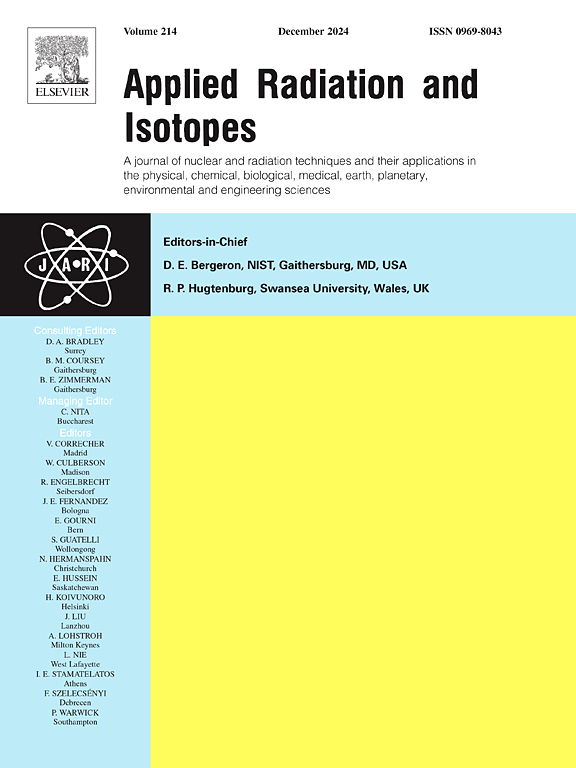从 18F[FDG] 生产中回收的水 - H218O 作为液态放射性废物。
IF 1.8
3区 工程技术
Q3 CHEMISTRY, INORGANIC & NUCLEAR
引用次数: 0
摘要
在这项研究中,使用伽马能谱法和液体闪烁计数技术分析了10个回收的水样,以鉴定放射性杂质(质量和数量)和放射性废物资格。用11兆电子伏特质子辐照回收的[18O]水,经18O(p,n)18F反应产生[18F]氟化物,证实其中存在3H, 56,57co, 52Mn的几种放射性同位素。放射性杂质直接在富集水中产生或从活化的哈瓦尔箔或钽体靶材中冲洗出来。对回收水的质量影响最大的是在生产之后,因为放射性废物含有56Co。氚3H的活性浓度最高,约为0.1 GBq/ml。所有10个样品都符合过渡性低放射性废物的标准。本文章由计算机程序翻译,如有差异,请以英文原文为准。
Recovered water - H218O from the 18F[FDG] production as liquid radioactive waste
In this study, ten recovered water samples were analysed using gamma spectrometry and Liquid Scintillation Counting techniques for identification of radioactive impurities (quality and quantity) and for radioactive waste qualifications. The presence of several radioactive isotopes of 3H, 56,57Co 52Mn in the recovered [18O] water irradiated with 11 MeV protons used to produce [18F] fluoride by the 18O(p,n)18F reaction has been confirmed. Radioactive impurities were generated directly in enriched water or washed out from activated Havar foil, or tantalum body target material. The highest impact on the qualification of the recovered water remains after the production as a radioactive waste has 56Co. The highest activity concentration of about 0.1 GBq/ml has been detected in the case of tritium 3H. All ten samples were qualified as transitional, low-level radioactive wastes.
求助全文
通过发布文献求助,成功后即可免费获取论文全文。
去求助
来源期刊

Applied Radiation and Isotopes
工程技术-核科学技术
CiteScore
3.00
自引率
12.50%
发文量
406
审稿时长
13.5 months
期刊介绍:
Applied Radiation and Isotopes provides a high quality medium for the publication of substantial, original and scientific and technological papers on the development and peaceful application of nuclear, radiation and radionuclide techniques in chemistry, physics, biochemistry, biology, medicine, security, engineering and in the earth, planetary and environmental sciences, all including dosimetry. Nuclear techniques are defined in the broadest sense and both experimental and theoretical papers are welcome. They include the development and use of α- and β-particles, X-rays and γ-rays, neutrons and other nuclear particles and radiations from all sources, including radionuclides, synchrotron sources, cyclotrons and reactors and from the natural environment.
The journal aims to publish papers with significance to an international audience, containing substantial novelty and scientific impact. The Editors reserve the rights to reject, with or without external review, papers that do not meet these criteria.
Papers dealing with radiation processing, i.e., where radiation is used to bring about a biological, chemical or physical change in a material, should be directed to our sister journal Radiation Physics and Chemistry.
 求助内容:
求助内容: 应助结果提醒方式:
应助结果提醒方式:


